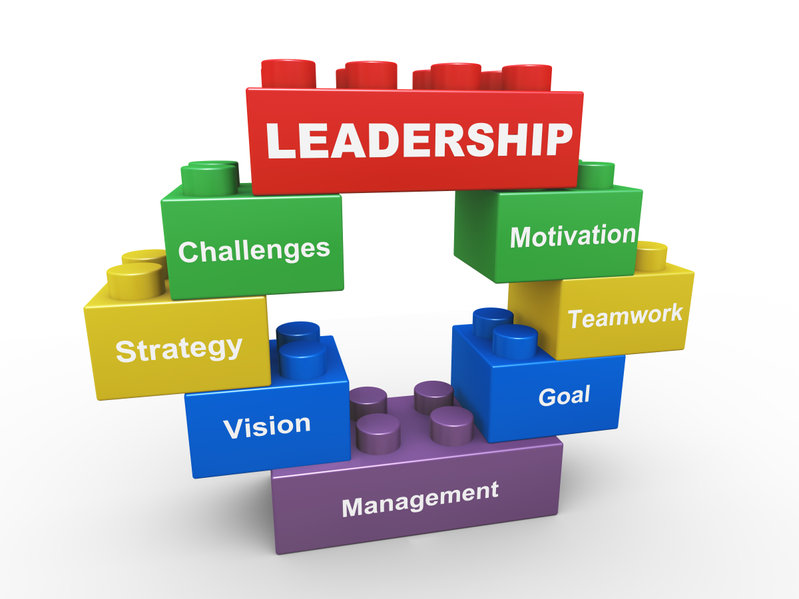
There are countless books, articles, blogs, videos, events and courses that aim to help individuals become better leaders. Why are there so many? Because every organization needs an authentic leader who serves as a role model and exhibits the behaviors and mindset that help deliver on the company’s vision, mission and values. True leaders are always trying to improve their skills to best influence and impact the success of their team, employees or other stakeholders. Here are five do’s and don’ts from the experts.
Insights from 5 Leadership Experts

Being a leader is no easy task. Whether you have been in a leadership role for years or are just beginning your leadership journey, here are some tips from the experts.
- Laura Patterson, author and CEO of VisionEdge Marketing
- Do foster a culture of growth from the top.
- Don’t let company culture shape itself.
Company cultures can take many shapes and styles depending on the business, product and people within the organization, Patterson says. She recommends that corporate culture be founded on shared growth and implemented from the top. In her book Fast-Track Your Business: A Customer-Centric Approach to Accelerate Market Growth, Patterson says, “It’s the CEO who creates and nurtures a culture of growth. To foster such a culture, the CEO must first define the organization’s values and expected behaviors. Ideally, these values will spring from and support the company’s purpose while being applicable to everyone within the organization. A company’s purpose is derived from its values.” From there, Patterson suggests, “Make it real. Document your values and corresponding behaviors. Then, protect and nurture it.”
- Skip Weisman, speaker and business coach
- Do operate with transparency and communication.
- Don’t create a barrier between you and your team.
In an interview with Nettie Owens in her book What Businesses Need to Know Right Now, Weisman says many leaders are hesitant to be transparent with their team, employees or stakeholders. “People say knowledge is power. But a lot of times, business owners feel like too much knowledge gives the employees too much power. And that’s going to cause problems.”
The challenge lies in the fact that knowledge is empowering, he suggests. “If you have the right knowledge, you can take action in that way. So, the first thing is that vision and strategy. The second thing is performance management and performance expectations. And then, the third level that gets a lot of business owners a little out of sorts is financial transparency. I’ve had many business owners come to me, and one of the things they say is, ‘I want my employees to take ownership of their jobs. I want them to be more proactive in their jobs and take ownership.’ Well, you take ownership when you have an idea of what that really means.”
- Simon Sinek, author of Start with Why
- Do implement change internally, where you can, and where it matters most.
- Don’t let outside forces overwhelm you.
Sinek believes in an optimistic approach to leadership. He suggests that even when external forces are particularly challenging, a successful leader knows to focus internally. “The ups and downs of the economy, the uncertainty of the stock market, the new technology that renders your business model obsolete overnight, the competition that is trying to kill you or at a minimum stop your growth and steal your customers—we have no control over these forces. They’re constant and they’re not going away,” says Sinek.
“The only variable are the conditions inside the organization. That’s where leadership matters, because it’s the leader who sets the tone. When leaders make a choice to put the people first, remarkable things happen. Leadership is a choice, not a rank,” states Sinek. He believes anyone in an organization can be a leader. “It’s choosing to look out for the person on your left and to look out for the person on your right.”
- Matt Church, Peter Cook and Scott Stein, authors of The Thought Leaders Practice
- Do seek to rethink established ideas.
- Don’t simply follow in the footsteps of your own leaders.
According to Church, Cook and Stein, “Ideas come from contribution and contradiction.” The authors suggest that a leader should seek to establish his or her unique way of thinking by examining the ways other notable leaders think. “As you come across an idea in a book or blog, ask yourself not: ‘What are they saying?’ but rather: ‘What do I think about that?’” According to the authors, “original thinking will come from a ‘yes AND’ or a ‘yes BUT’ place. It is in the contributions and contradictions to existing ideas that you can add your piece to an existing thought. Thought leaders don’t just read or highlight the books they read, they add to them.”
- Eric Pfeiffer, business coach and entrepreneur
- Do hone and develop your own self-leadership.
- Don’t only focus on leading others.
In his book Leadership Gravitas: 12 Essential Skills to Expand Your Impact and Influence, Pfeiffer explains the importance of first knowing how to lead yourself. “The idea of self-leadership has been largely overlooked,” he says. “Most leadership resources focus on how to manage, inspire, motivate and influence other people. These are important skills, but these resources are largely others-focused. Why are there not more books or conferences inviting us to take a long, hard look into what’s happening inside ourselves? I think we overlook self-leadership because we all share a fear of what we’ll find…We can’t help others until we’ve helped ourselves.”
With a focus on understanding and empowering our own emotional intelligence, personal responsibility and self-awareness, Pfeiffer hones the skills of self-leadership as an essential “gravitas” for leaders of all levels. “Leadership gravitas focuses first on how to lead yourself—because a leader who leads him or herself will influence others with greater ease.”
Becoming a Better Leader Takes Ongoing Development

More than anything, leaders know that leadership is an ongoing learning process that must be sought out, constantly refined and carefully crafted. Stoke a passion for ongoing knowledge, seek insights from leaders in various roles and across multiple industries and use that knowledge to empower and maintain a balanced approach to leadership. When you do, you will create a ripple effect that will impact your career, team, organization and the bottom line.
